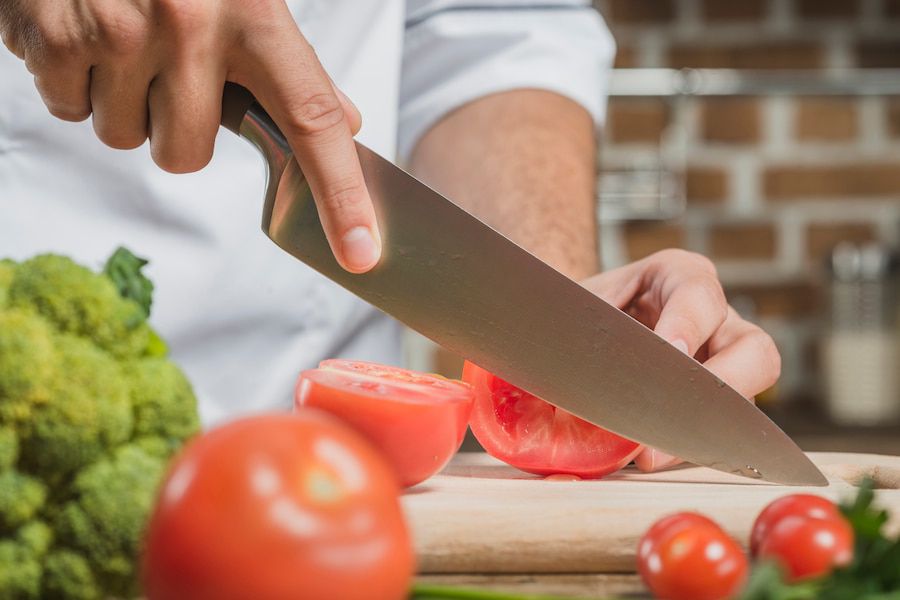Are you curious about how to make a chef knife that stands out as both functional and artistic? The allure of crafting a tailor-made kitchen tool has captivated chefs and home cooks alike. A chef knife is not just an everyday tool; its a symbol of precision, care, and immense skill. Whether you’re delighted by the idea of customization or simply want a high-quality knife suited to your cooking needs, understanding this incredible process can be transformative.
Creating a chef knife involves dedication, attention to detail, and a good understanding of materials and techniques. From selecting your steel to forging the blade and finishing its handle, the journey to making a chef knife is a craft rich in tradition. Lets dive into this exciting process and learn how to go from raw materials to a spectacular multi-purpose kitchen utensil.

Why Create Your Own Chef Knife?
Before delving into the steps of how to make a chef knife, its important to understand why crafting one is such a fascinating endeavor. Here are a few compelling reasons:
- Personal Touch: Your knife reflects your style and preferences.
- Quality Control: Choose the best materials for durability and performance.
- Cost-Effective: Handcrafted knives offer better value for long-term use.
- Learning Experience: Sharpen your skills and gain tremendous respect for knife-making craftsmanship.
Essential Materials and Tools to Start With
To get started, youll need the following materials and tools. Remember, precision is key when it comes to knife-making:
- High-carbon or stainless steel for the blade
- A forging hammer
- Forge for heating the steel
- Grinder for shaping the blade
- Quenching oils
- Wood, resin, or micarta for the handle
- Epoxy glue
- Sandpaper of varying grits
Having these tools handy makes the process smoother and more efficient. For a detailed breakdown of knife-related craftsmanship, check out resources available online, such as these articles on fast vegetable cutting and turkey slicing tips.
Step-by-Step Guide on How to Make a Chef Knife
1. Choosing the Right Steel
The foundation of a great chef knife starts with selecting the appropriate steel. Many knife-making enthusiasts recommend high-carbon steel for its sharpenability and durability. However, stainless steel works great too if you prioritize rust resistance. Your choice depends on your needs in professional or home kitchens.
To better grasp the importance of steel selection, you can read about how different chef tools perform. Explore guides like how to use a chefs knife effectively.
2. Forging the Blade
Heat the steel in your forge at high temperatures until its malleable. Then, use your forging hammer to shape the blade. Pay attention to forming the tang (the portion of the blade that extends into the handle), as this secures stability.
3. Shaping the Blade
Once forged, the steel will need to cool slightly before grinding. Using a belt grinder or sander, carefully shape the blade to your desired design. Ensure that the edge is uniform and thin to allow easier sharpening later.
4. Heat Treatment
After achieving the shape, heat-treat the blade by reheating it and quickly quenching it in oil to harden the steel. This step gives your blade the necessary strength and durability.
5. Polishing and Sharpening
Using finer grit sandpaper or a polishing cloth, smoothen the surface of the blade. Follow this by sharpening the edge to a razor-sharp finish using wet stones or professional sharpening tools. A properly sharpened knife is a chefs delight because its precision enhances your overall experience in the kitchen.
6. Crafting the Handle
The next step is focusing on the handle. Choose between wood, resin, or micarta based on your aesthetic and practical needs. Shape your chosen material into a comfortable grip and affix it to the tang using epoxy glue. Secure it with rivets for extra strength.
7. Final Assembly and Testing
After finishing touches, assemble all the pieces of your knife. Ensure everything fits snugly. Test your knifes balance, sharpness, and strength by slicing through various materials.
Common Mistakes to Avoid During Knife Crafting
Even the most skilled knife makers make mistakes. Avoid these common pitfalls:
- Overheating the steel during forging
- Improper handle attachment
- Neglecting uniform blade thickness
How to Care for Your Handcrafted Knife?
Maintenance is key to ensuring your homemade chef knife remains in top condition for years. Clean it immediately after use, avoid putting it in a dishwasher, and regularly sharpen the blade. Also, store it in a dry place to minimize rust.

FAQs
1. Can I make a chef knife without prior experience?
Yes, although some basic knowledge of forging and blade-making tools is beneficial, you can follow this detailed guide to achieve a terrific result.
2. How much time will it take to make a chef knife?
On average, crafting a chef knife takes anywhere from 10 to 20 hours, depending on complexity and personal expertise.
3. What is the best steel for chef knives?
High-carbon steel is recommended for sharpness and durability, while stainless steel offers rust resistance for frequent use in humid conditions.
Crafting your own chef knife is a tremendous accomplishment and a testament to your creativity and skill. Whether youre a professional chef or a passionate home cook, learning how to make a chef knife can elevate your culinary experience in every way!
This article contains affiliate links. We may earn a commission at no extra cost to you.


